
 |
|
|
Fruits
Volume 63 Number 15 Date 08/16/2018 CODLING MOTH - Large moth flights are still occurring in some eastern and southern Wisconsin locations. Above-threshold weekly counts were registered in 13 of 21 reporting orchards during the period ending August 15. Assessing larval damage is recommended before the end of the month to forecast first-generation codling pressure next season. According to Orchard IPM Specialist John Aue, captures higher than 10 moths per trap per week should result in visible fruit damage at harvest. If no damage is observed this fall or less than 1% of fruits are affected, then the moths are probably coming from outside of the orchard. APPLE MAGGOT - Counts were generally low this week and ranged from 1-11 per trap, with the highest captures reported from Grant and Ozaukee counties. This season's AM emergence has been variable but mostly light. Apple maggot sprays should be maintained through the first week of September in orchards where flies are still being trapped at the rate of one fly per trap per week on unbaited traps or five flies per trap per week on baited traps. SPOTTED TENTIFORM LEAFMINER - The third and last flight of the season has likely peaked in most apple orchards. Another larval generation should be anticipated in September. The third-generation pupae that develop by fall will remain dormant in the mines and overwinter inside of leaves on the ground. Apple growers who have recorded large numbers of third brood moths this month can assess infestations in September by monitoring orchard perimeters for leaf mines. OBLIQUEBANDED LEAFROLLER - Oviposition by the summer flight of moths is underway. In contrast to spring caterpillars that primarily feed on vegetative tissue, the late-season larvae infest and damage ripening fruit. Management of the summer generation this month may be advisable to reduce the overwintering population and subsequent spring brood. Orchard IPM Specialist John Aue recommends a 3-5% fruit injury rate as the treatment threshold and suggests a trapping density of two traps per 20 acres to determine where to direct treatments. SAN JOSE SCALE - Second-generation crawlers are active and continued monitoring is suggested for two more weeks. Damage by this pest can increase exponentially from one generation to the next, and problems may persist through mid-September. As harvest begins, it is recommended that growers examine fruits for the "black cap stage" adults and maintain tape on infested limbs. A count of 10-15 scale crawlers over a few days or 10 crawlers on one tape with zero on all other tapes, may warrant application. STINK BUG - Late-season activity is expected to increase in the next 2-3 weeks, especially in orchards with ground covers or adjacent to uncultivated areas. Apple growers should begin scouting fruits for the dimples or dark, irregular circular depressions typical of stink bug feeding, and flag sites with multiple depressions on the same fruit or tree. Damage by this pest is often limited to specific areas in the orchard and depending on the distribution of the population, spot treatment may be adequate. Apple growers should not mow cover crops or weeds when stink bugs are present to prevent the insects from moving up into the trees. -- Krista Hamilton, DATCP Entomologist 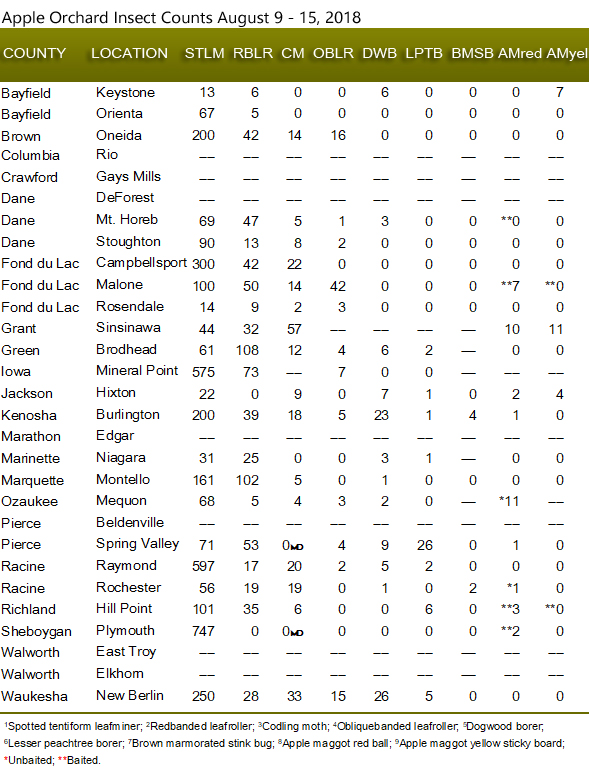
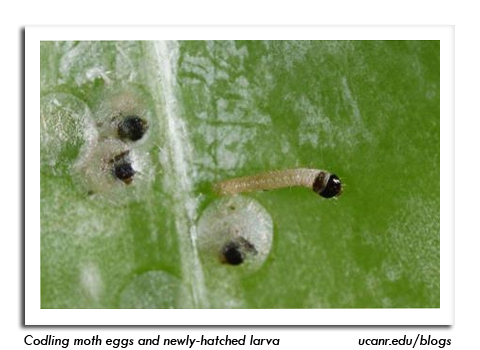
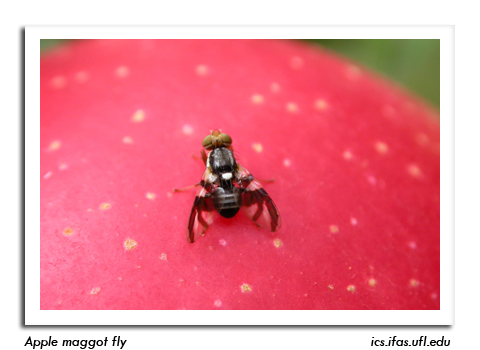

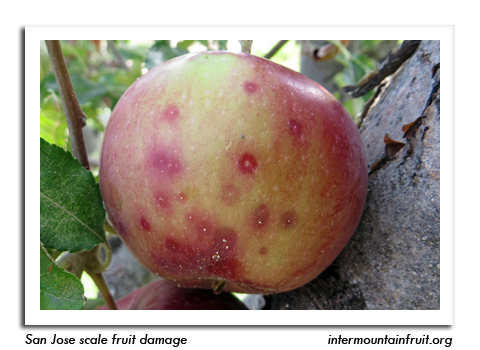
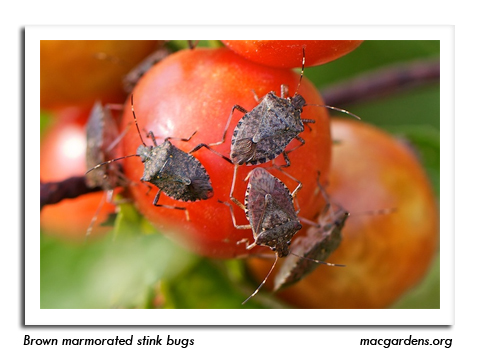
|
|
|